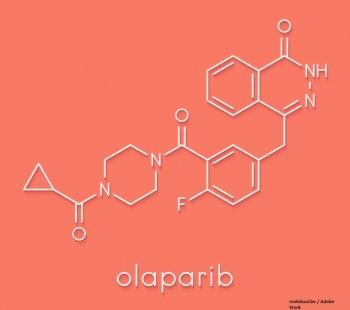
A score derived from CT imaging using a machine learning radiomics approach was able to reliably identify epithelial ovarian cancer patients with poor survival outcomes.

Your AI-Trained Oncology Knowledge Connection!


A score derived from CT imaging using a machine learning radiomics approach was able to reliably identify epithelial ovarian cancer patients with poor survival outcomes.

Researchers tested whether conservative management of adnexal masses classified as benign could lead to subsequent malignant ovarian cancer.

Two new studies found that targeting the cyclin-dependent kinases 4/6 exposed a vulnerability in SMARCA4-deficient cancers.

Researchers studied how the anti–PD-L1 agent avelumab fit into the recurrent and refractory ovarian cancer treatment landscape.

A large study looked at previously confirmed and newly discovered associations between several genes and breast cancer and ovarian cancer risk.

This study was the first in a large, unselected population to assess ovarian mass appearance and the connection to ovarian cancer risk.

In this new study involving a mouse model of ovarian cancer, researchers evaluated the effects of entinostat on adaptive immune responses.

A screening study that began more than 30 years ago looked at ultrasound screening for at-risk women for ovarian cancer and its effects on disease-specific survival.

A pooled analysis of two randomized trials found that neoadjuvant chemotherapy and upfront debulking surgery yield similar outcomes in patients with advanced tubo-ovarian cancer, except in some settings.

Researchers tested whether 2 years of maintenance therapy with olaparib would improve outcomes in advanced ovarian cancer patients.

Regular users of low-dose aspirin appear to have a reduced risk of developing ovarian cancer, according to a new study.

A study shows that combined hormonal contraceptive use is associated with a significant reduction in the risk of ovarian cancer.

A new proteomic analysis found that CT45 is an independent prognostic factor in patients with high-grade serous ovarian cancer, and a potential target of immunotherapies.

Certain malignancies may possess a common and targetable matrix response, which affects disease pathogeneis, according to a study in Cancer Discovery.

Dr. Dmitriy Zamarin speaks with Cancer Network about the findings of a phase II trial in platinum-resistant ovarian cancer patients.

New research examines the mechanisms underlying why most patients with high-grade serous ovarian cancer develop resistance to PARP inhibitors.

Researchers have developed a mouse model of high-grade serous carcinoma that could prove useful in the preclinical testing of prevention strategies for ovarian cancer.

Optical coherence tomography and multispectral fluorescence imaging have demonstrated promising results in the early detection of ovarian cancer.

Dr. Ranjit Manchanda speaks with Cancer Network about using population testing to predict and prevent gynecologic cancers.

Sorafenib combined with topotecan and then continued as maintenance therapy offered a significant improvement in survival outcomes in women with platinum-resistant ovarian cancer.

Apatinib combined with etoposide offers promising efficacy in patients with platinum-resistant ovarian cancer.

The regimen consisting of carboplatin and paclitaxel represents the backbone of ovarian cancer treatment. Here, we reflect on our experience administering the carboplatin/paclitaxel regimen to scores of ovarian cancer patients over the past decade and a half.

A murine study suggests this engineered combination may offer a major advantage over current CAR T-cell–based immunotherapies.

The intratumoral vasculature of high-grade serous ovarian cancer does not appear to undergo significant changes during disease progression.

Recent use of aspirin or NSAIDs is associated with improved ovarian cancer–specific survival.